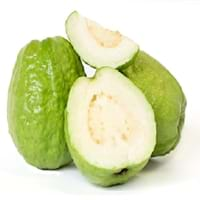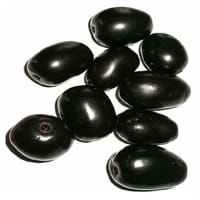Benefits
Health Benefits
Cancer prevention, Diarrhea treatment, Prevents constipation, Scurvy treatment, Treatment of dysentary
Cancer prevention, Heart care, Increase in haemoglobin, Regulates Blood Sugar, Ulcer prevention
General Benefits
Controls blood pressure, Cures cough, Improves eye vision, Maintains healthy cholesterol level, Treatment of common cold
Boosts immune system, Digestive aid, Fights against infections, Strengthens bones
Skin Benefits
Anti-aging benefits, Brightens and lightens complexion, Hydrates skin, Treatment of skin diseases
Brightens and lightens complexion, Skin cleansing, Skin rejuvenation, Treatment of acne, Treatment of dark spots
Hair Benefits
Prevents hair loss
Promotes longer and healthier hair, Protects hair
Allergy
Allergy Symptoms
Breathing difficulty, Coughing, Runny nose, Sneezing, Swelling of mouth, tongue or lips, Wheezing
Abdominal pains, NA
Side Effects
Hair thinning, Nail thinning, Skin problems, Tooth decay, Weakness, Possibly unsafe during pregnancy
Decrease in blood sugar levels, Allergic reaction, Throat irritation, Throat swelling, Possibly unsafe during pregnancy
Recommeded for
Pregnant Women
Yes
Yes
Lactating Women
Yes
Yes
Best Time to Eat
As a snack in the late afternoon, Don't consume at night and before bed, Eat the fresh ones, avoid mixing with any other foods, don't eat after meal., Morning time (before lunch)
As a snack in the late afternoon, Don't consume at night and before bed, Eat the fresh ones, avoid mixing with any other foods, don't eat after meal., Morning time (before lunch), Strictly avoid empty stomach
Nutrition
Serving Size
100 g
100 g
Carbs
14.30 g
30
14.00 g
32
Fiber
5.40 g
8
0.60 g
39
Sugar
8.90 g
30
Not Available
Protein
2.50 g
5
1.00 g
26
Protein to Carb Ratio
0.18
9
0.04
24
Vitamins
Vitamin A (Retinol)
31.00 mcg
16
0.00 mcg
37
Vitamin B1 (Thiamin)
0.07 mg
13
0.02 mg
39
Vitamin B2 (Riboflavin)
0.04 mg
23
0.01 mg
99+
Vitamin B3 (Niacin)
1.08 mg
7
0.25 mg
99+
Vitamin B5 (Pantothenic Acid)
0.45 mg
6
Not Available
Vitamin B6 (Pyridoxin)
0.11 mg
14
0.04 mg
99+
Vitamin B9 (Folic acid)
49.00 mcg
3
Not Available
Vitamin C (Ascorbic Acid)
228.30 mg
1
11.85 mg
99+
Vitamin E (Tocopherole)
0.73 mg
15
Not Available
Vitamin K (Phyllochinone)
2.60 mcg
24
Not Available
Lycopene
5,204.00 mcg
1
Not Available
Lutein+Zeaxanthin
0.00 mcg
36
Not Available
Choline
7.60 mg
13
Not Available
Fat
0.95 g
7
0.23 g
32
Minerals
Potassium
417.00 mg
10
55.00 mg
99+
Iron
0.26 mg
39
1.41 mg
10
Sodium
2.00 mg
18
26.20 mg
3
Calcium
18.00 mg
23
11.65 mg
31
Magnesium
22.00 mg
11
35.00 mg
3
Zinc
0.23 mg
12
Not Available
Phosphorus
40.00 mg
8
15.60 mg
30
Manganese
0.15 mg
21
Not Available
Copper
0.23 mg
5
Not Available
Selenium
0.60 mcg
10
Not Available
Fatty Acids
Omega 3s
112.00 mg
6
0.00 mg
38
Omega 6s
288.00 mg
5
0.00 mg
99+
Sterol
Phytosterol
Not Available
0.00 mg
16
Water Content
80.80 g
99+
84.75 g
38
Ash
1.40 g
5
0.50 g
26
Calories
Serving Size
100 g
100 g
Calories in Fresh Fruit with Peel
68.00 kcal
15
60.00 kcal
18
Calories in Fresh Fruit without Peel
Not Available
Not Available
Calories in Frozen Form
Not Available
Not Available
Calories in Dried Form
325.00 kcal
13
Not Available
Calories in Canned Form
57.00 kcal
19
Not Available
Calories in Foods
Calories in Juice
55.00 kcal
25
80.00 kcal
13
Calories in Jam
240.00 kcal
21
120.00 kcal
36
Calories in Pie
340.00 kcal
11
300.00 kcal
18
Characteristics
Type
Tree fruit, Tropical
Tree fruit, Tropical
Season
All seasons
Monsoon, Summer
Varieties
Lucknow 49, Allahabad Safeda, Chittidar, Harijha, Apple guava, Hafshi, Arka Mridula and Allahabad Surkha
Ram Jarnun and Paras
Seedless Variety
No
No
Color
Green, Pink, Yellow
Black, Magenta, Purple
Inside Color
White
Purple
Shape
Round
Oval
Texture
Crispy
Juicy
Taste
Sweet-Sour
Astringent, Sweet
Origin
Central America, Mexico, South America
Bangladesh, India, Indonesia, Malaysia, Nepal, Pakistan, Philippines, Sri Lanka
Grows on
Trees
Trees
Cultivation
Soil Type
Loam, Rocky, Sandy
Loam, Sandy loam, Well-drained
Soil pH
4.5-7
6.5-7.5
Climatic Conditions
Sunny
Humid, Rainfall
Facts
Facts about
- The black pigment in Guava leaves is used for textile applications.
- Guava leaves are used to make tea.
- Oils extracted from guava seeds are used in various cosmetics.
- Guava wood is used for decorative purposes.
- Wood of jambul tree is water-resistant wood & is used in railroads and to implement engines in the well.
- In Indian mythology, it is said that Jambul fruit was revered by Buddha.
- Jambul has a huge importance in Ayurveda.
In Alcoholic Beverages
Wine
Yes
Yes
Beer
Yes
Yes
Spirits
Yes
No
Cocktails
Yes
Yes
Production
Top Producer
India
India
Other Countries
China, Indonesia, Mexico, Nigeria, Pakistan, Philippines, Thailand
Bangladesh, Indonesia, Malaysia, Nepal, Pakistan, Philippines, Sri Lanka
Top Importer
Canada
Not Available
Top Exporter
India
India
Scientific Name
Botanical Name
Psidium guajava
Syzygium cumini
Synonym
Not Available
Eugenia cumini
Classification
Domain
Eukarya
Eukarya
Kingdom
Plantae
Plantae
Subkingdom
Tracheobionta
Tracheobionta
Division
Magnoliophyta
Magnoliophyta
Class
Magnoliopsida
Magnoliopsida
Subclass
Rosidae
Rosidae
Order
Myrtales
Myrtales
Family
Myrtaceae
Myrtaceae
Genus
Psidium
Syzygium
Species
Psidium guajava
S. cumini
Generic Group
Myrtle
Not Available












